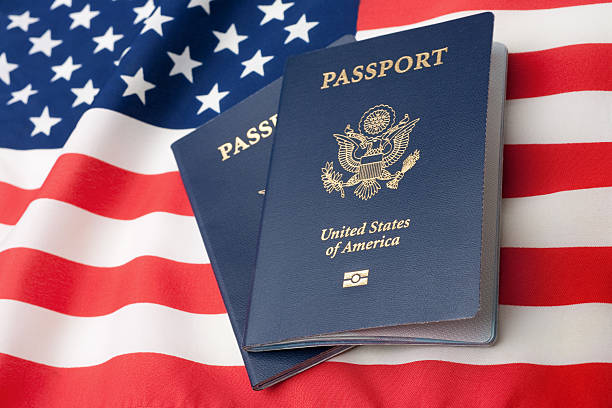Immigration
How to Find LMIA-Approved Jobs in Canada for Foreigners in 2024
By
Canada is one of the most popular destinations for foreigners who want to work and live in a diverse, multicultural, and prosperous country. However, finding a job in Canada is not always easy, especially if you need a work permit to legally work in the country.
One of the ways to obtain a work permit in Canada is to have a positive Labour Market Impact Assessment (LMIA) from Employment and Social Development Canada (ESDC). A LMIA is a document that shows that there is a need for a foreign worker to fill a specific job and that no Canadian worker is available to do it.
But how do you find LMIA-approved jobs in Canada for foreigners in 2024? What are the requirements, benefits, and challenges of getting a LMIA? And what are the best sectors and provinces to look for LMIA-approved jobs in Canada?
So, let’s get started!
What is a LMIA and Why Do You Need It?
An LMIA is required for most foreign workers who want to obtain a work permit in Canada. A work permit is a document that allows a foreign worker to work in Canada legally for a limited period of time.
A work permit is usually tied to a specific employer, job, and location.
There are two main reasons why you need an LMIA to get a work permit in Canada:
- To protect the Canadian labor market: A LMIA ensures that hiring a foreign worker will not have a negative impact on the Canadian labor market, such as reducing wages, displacing Canadian workers, or creating labor shortages.
- To qualify for specific immigration programs: A LMIA can also help you be eligible for specific immigration programs that can lead to permanent residency in Canada, such as the Federal Skilled Worker Program, the Federal Skilled Trades Program, or the Canadian Experience Class.
However, not all foreign workers need an LMIA to get a work permit in Canada. There are some exceptions and exemptions for certain workers, such as those covered by international agreements, those transferred within the same company, or those nominated by a province or territory.
You can check if you need a LMIA by using the online tool the Government of Canada provides.
What Are the Types and Categories of LMIA?
There are two main types of LMIA: high-wage and low-wage. The type of LMIA depends on the employer’s wage, the occupation’s median hourly wage, and the location where the foreign worker will work.
- High-wage LMIA: A high-wage LMIA is for foreign workers who will be paid at or above the median hourly wage of the occupation and the location where they will work. For example, if the median hourly wage for a software engineer in Toronto is $40, then a foreign worker who will be paid $45 per hour will need a high-wage LMIA. A high-wage LMIA has stricter requirements and higher fees than a low-wage LMIA.
- Low-wage LMIA: A low-wage LMIA is for foreign workers who will be paid below the median hourly wage of the occupation and the location where they will work. For example, if the median hourly wage for a cook in Vancouver is $18, then a foreign worker who will be paid $15 per hour will need a low-wage LMIA. A low-wage LMIA has lower requirements and fees than a high-wage LMIA.
There are also different categories of LMIA based on the skill level, duration, and job sector. Each category has its own specific requirements, criteria, and process. Some of the most common categories of LMIA are:
- Global Talent Stream: This is a special category of LMIA for high-skilled, high-wage, and in-demand occupations in the fields of science, technology, engineering, and mathematics (STEM). This category offers faster processing times (within ten business days), lower fees ($1,000 per position), and more flexibility for the employer and the foreign worker. To qualify for this category, the employer must be referred by one of the designated partner organizations or meet the minimum innovative criteria set by ESDC. The foreign worker must also meet the minimum education, experience, and language requirements for the job.
- Agricultural Stream: This is a category of LMIA for low-skilled, low-wage, and seasonal occupations in the agricultural sector, such as farm workers, greenhouse workers, or mushroom harvesters. This category offers lower fees ($100 per position) and more exemptions for employers and foreign workers. To qualify for this category, the employer must have a positive history of compliance with the Temporary Foreign Worker Program (TFWP), the foreign worker must have at least one year of relevant work experience in the past three years, and the job must be for a maximum of 12 months.
- Caregiver Stream: This is a category of LMIA for low-skilled, low-wage, and permanent occupations in the caregiving sector, such as home childcare providers or home support workers. This category offers lower fees ($100 per position) and more pathways for the foreign worker to apply for permanent residency in Canada. To qualify for this category, the employer must provide a valid contract and a positive medical exam for the foreign worker, the foreign worker must have at least one year of relevant work experience in the past three years and meet the minimum language and education requirements for the job, and the job must be for a minimum of 30 hours per week.
These are just some of the examples of the types and categories of LMIA. There are many other categories of LMIA for different occupations and sectors, such as academics, francophones, film and entertainment, or religious workers. You can find more information about the types and categories of LMIA.
What Are the Requirements and Processes of Getting an LMIA?
The requirements and process of getting a LMIA vary depending on the type and category of LMIA that you are applying for. However, there are some common steps and documents that you and your employer need to follow and provide.
The first step is to find an employer who is willing and able to hire you and support your LMIA application. The employer must have a genuine job offer for you and meet the minimum recruitment and advertising requirements set by ESDC.
The second step is to wait for the decision from ESDC. The processing time of a LMIA can range from 10 business days to several months, depending on the type and category of LMIA and the volume of applications.
ESDC will assess the LMIA application based on various factors, such as the impact on the Canadian labour market, the wages and working conditions offered, the employer’s compliance history, and the availability of Canadian workers.
The third step is to receive the LMIA decision from ESDC. If the LMIA is positive, it means that ESDC has approved the employer’s request to hire you and that you can apply for a work permit.
The employer will receive a copy of the LMIA and a confirmation letter they must send you. You will need these documents to apply for a work permit online or at a visa office.
If the LMIA is negative, it means that ESDC has denied the employer’s request to hire you and that you cannot apply for a work permit. The employer will receive a letter explaining the reasons for the refusal and the options to request a review or appeal of the decision.
What Are the Benefits and Challenges of Getting an LMIA?
Getting an LMIA can have both benefits and challenges for you and your employer. Here are some of the pros and cons of getting a LMIA:
- Benefits:
- A LMIA can help you obtain a work permit in Canada and work legally for a specific employer, job, and location.
- A LMIA can also help you qualify for certain immigration programs that can lead to permanent residency in Canada, such as the Federal Skilled Worker Program, the Federal Skilled Trades Program, or the Canadian Experience Class.
- A LMIA can also help you earn a higher wage, enjoy better working conditions, and access more opportunities in the Canadian labour market, especially if you have a high-wage LMIA or a Global Talent Stream LMIA.
- Challenges:
- A LMIA can be difficult to obtain, as it involves a lot of paperwork, fees, and time. It also requires the cooperation and support of your employer in Canada, who may need to be willing or able to hire you and support your LMIA application.
- A LMIA can also have some limitations and restrictions, such as shorter work permit durations, caps on the number of foreign workers per employer, or mandatory transition plans, especially if you have a low-wage LMIA or an Agricultural Stream LMIA.
- A LMIA can also be subject to changes and updates, as the Canadian government may revise the rules and regulations of the TFWP and the LMIA process from time to time.
What Are the Best Sectors and Provinces to Look for LMIA-approved Jobs in Canada?
The best sectors and provinces to look for LMIA-approved jobs in Canada depend on your skills, qualifications, and preferences. However, there are some general trends and patterns that you can consider when searching for LMIA-approved jobs in Canada.
According to the latest statistics from ESDC, the top FIVE sectors that received the most positive LMIAs in 2023 were:
- Accommodation and food services
- Agriculture, forestry, fishing and hunting
- Manufacturing
- Construction
- Administrative and support services
These sectors are mostly low-skilled, low-wage, and seasonal, which means that they have a higher demand for foreign workers and a lower supply of Canadian workers. However, these sectors also have more challenges and restrictions for foreign workers, such as shorter work permit durations, caps on the number of foreign workers per employer, or mandatory transition plans.
On the other hand, the top five sectors that received the least positive LMIAs were:
- Mining, quarrying, and oil and gas extraction
- Utilities
- Information and cultural industries
- Finance and insurance
- Public administration
These sectors are mostly high-skilled, high-wage, and permanent, which means that they have a lower demand for foreign workers and a higher supply of Canadian workers. However, these sectors also have more benefits and opportunities for foreign workers, such as faster processing times, longer work permit durations, and eligibility for certain immigration programs.
According to the same statistics, the top five provinces that received the most positive LMIAs were:
- Ontario
- Quebec
- British Columbia
- Alberta
- Saskatchewan
These provinces are the most populous, diverse, and developed in Canada, meaning they have more employers, jobs, and industries that require foreign workers. However, these provinces also have more competition and regulations for foreign workers, such as higher wages, stricter labor standards, or provincial nomination programs.
On the other hand, the bottom five provinces that received the least positive LMIAs were:
- Newfoundland and Labrador
- Prince Edward Island
- Nova Scotia
- New Brunswick
- Yukon
These provinces are the least populated, homogeneous, and developed in Canada, meaning they have fewer employers, jobs, and industries that require foreign workers. However, these provinces also have more incentives and support for foreign workers, such as lower wages, more accessible labor standards, or regional pilot programs.
How to Find and Apply for LMIA-approved Jobs in Canada?
Finding and applying for LMIA-approved jobs in Canada can be challenging but possible. Here are some tips and resources to help you find and apply for LMIA-approved jobs in Canada:
Many online job boards and websites post LMIA-approved jobs in Canada, such as Job Bank, Indeed, Monster, or Workopolis. You can search for LMIA-approved jobs by using keywords such as “LMIA,” “TFWP,” “work permit,” or “foreign worker.”
You can also filter your search by location, sector, or salary. You can apply for LMIA-approved jobs online by submitting your resume, cover letter, and other documents the employer requires.
We hope you now have a better understanding of what a LMIA is, how to get it, and how to find LMIA-approved jobs in Canada for foreigners in 2024.













